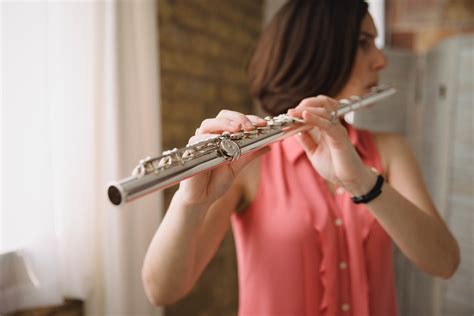Introduction
The flute, a melodic instrument renowned for its enchanting sound and expressive versatility, demands precise tone and pitch control for seamless musicality. This article delves into the intricacies of flute tone and pitch control, exploring techniques, strategies, and technological advancements that empower flautists to harness the full potential of their instrument.

Embracing Resonance: The Art of Tone Control
Tone: The unique timbre and character of a musical note, defined by its overtones and harmonics.
Harmonics: Frequency multiples of the fundamental frequency that add richness and colour to the tone.
-
Embouchure Control: The formation and position of the lips on the mouthpiece directly influence tone quality. Experiment with different embouchure shapes and pressures to find the optimal balance for desired tone.
-
Airflow Management: The volume and velocity of air passing through the flute affects tone. Adjust blowing strength and direction to produce a resonant and consistent sound.
-
Flute Tuning: Intonation adjustments to the flute’s headjoint and tuning barrel ensure the instrument plays in tune with itself and others. Consult a qualified flute technician for professional tuning.
Pitch Precision: Navigating Intonation Challenges
Pitch: The frequency of a musical note, measured in hertz (Hz).
Intonation: The accuracy and consistency with which pitches are played.
-
Ear Training: Develop a keen ear for intervals and pitch relationships. Listen attentively and tune your playing accordingly.
-
Finger Positioning: Precise fingering and proper hand position ensure the valves are closed completely, maintaining correct pitch.
-
Temperature and Humidity: Flute intonation can be affected by temperature and humidity changes. Warm the instrument before playing and adjust intonation if necessary.
Technological Advancements: Enhancing Tone and Pitch Control
-
Tuning Machines: Electronic devices that provide real-time pitch feedback, enabling flautists to adjust their playing and tune their instruments with greater accuracy.
-
Digital Effects: Digital processors allow for the manipulation and enhancement of tone, enabling flautists to explore a wider range of sonic possibilities.
-
Computer-Aided Instruction: Software programs provide interactive lessons, exercises, and feedback to assist flautists in developing their tone and pitch control.
The Benefits of Precision Control
-
Improved Expression: Precise tone and pitch control allows flautists to convey emotions and intentions with greater clarity and impact.
-
Musical Accuracy: Intonation accuracy ensures harmonious interplay with other musicians and instruments.
-
Enhanced Listening Experience: A well-controlled flute tone enhances the listening experience for both performers and audiences.
The Future of Flute Technique
-
Innovation in Instrument Design: Flutists can look forward to future advancements in flute design that further enhance tone and pitch control, such as ergonomic key mechanisms and advanced materials.
-
Virtual Reality Training: Emerging virtual reality technologies may provide immersive and interactive environments for flutists to hone their skills.
-
Biofeedback Techniques: Biofeedback systems could potentially monitor and improve flute performance by providing real-time feedback on physiological parameters related to tone and pitch.
Tips and Tricks: Mastering the Flute
-
Practice Scales and Arpeggios: Repetitive practice of scales and arpeggios develops finger dexterity and improves intonation.
-
Listen to Recordings: Listen attentively to recordings of accomplished flautists to understand and emulate their tone and pitch control.
-
Seek Guidance from a Teacher: A qualified flute teacher can provide personalized guidance and support in developing tone and pitch control.
Additional Resources
-
International Flute Society: A non-profit organization that promotes the flute, offers educational resources, and hosts international conventions.
-
National Flute Association: A professional organization dedicated to the advancement of flute playing, provides publications, workshops, and performance opportunities.
-
Online Flute Lessons and Masterclasses: Numerous online platforms offer flute lessons and masterclasses with experienced instructors.
Conclusion
Mastering tone and pitch control on the flute is an ongoing journey that requires dedication, practice, and a thirst for knowledge. By embracing the techniques, leveraging technological advancements, and seeking continuous improvement, flautists can unlock the full potential of their instrument and elevate their musical performances to new heights.





















